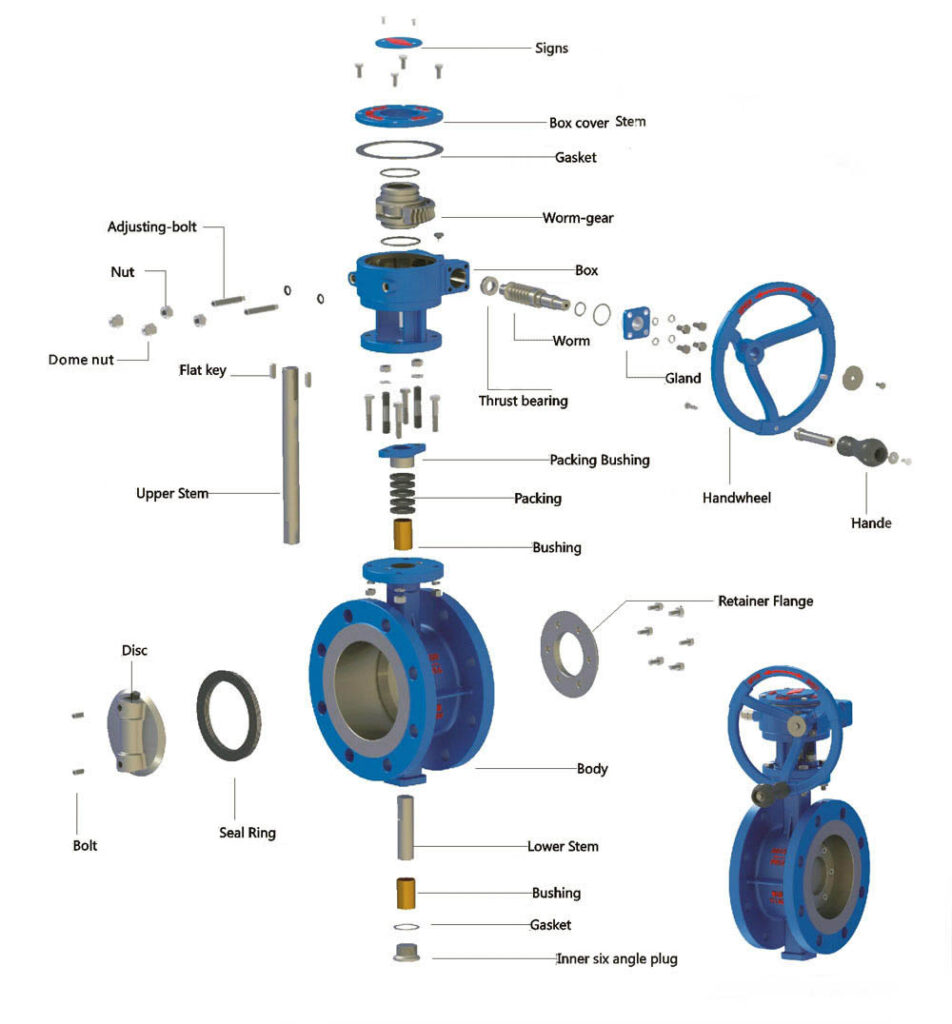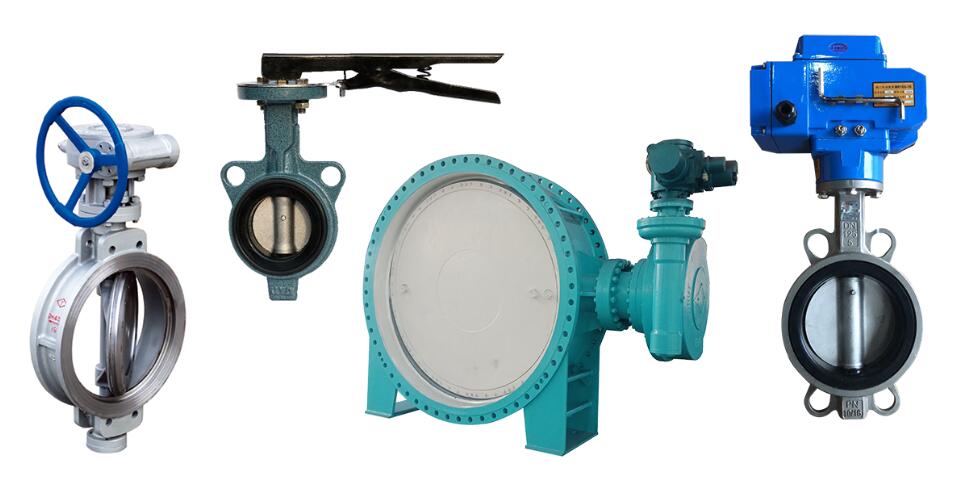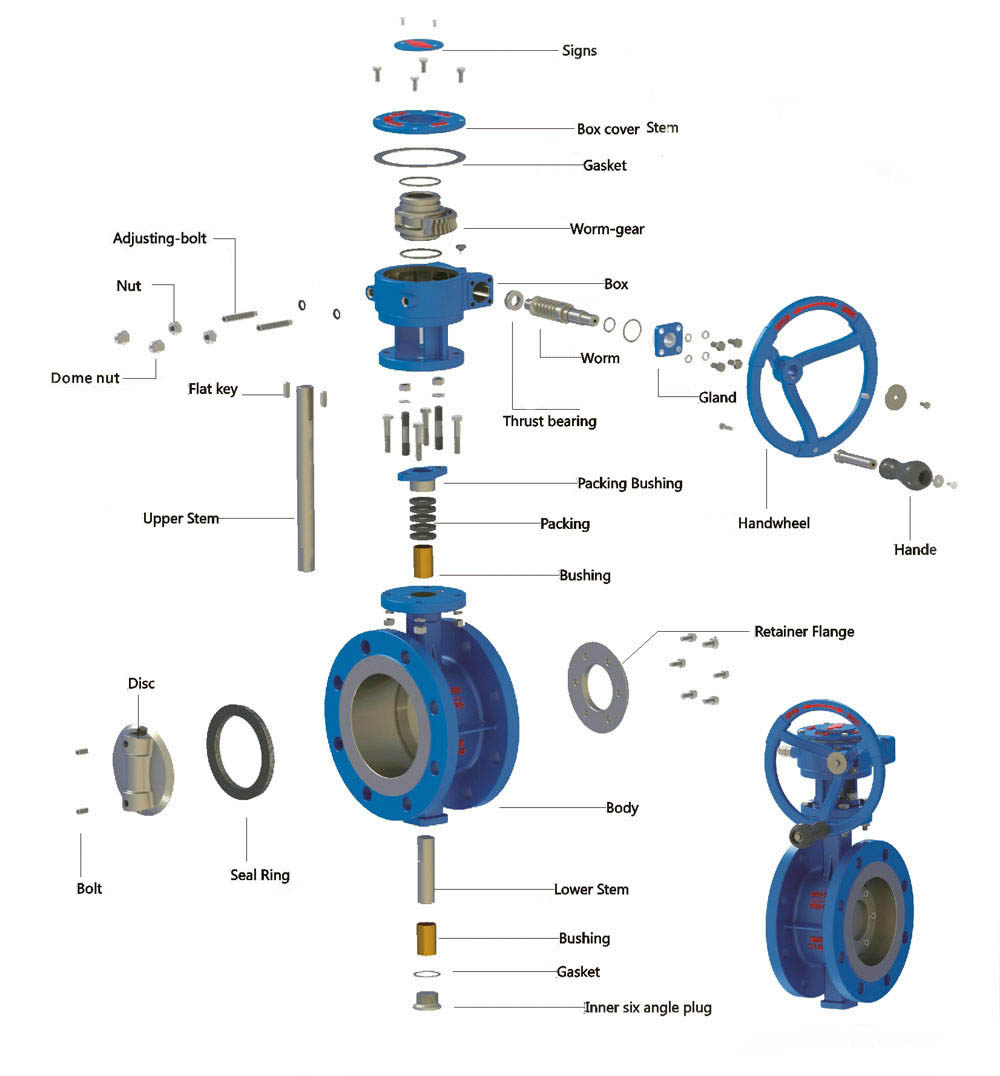โครงสร้างวาล์วปีกผีเสื้อ เป็นวาล์วแบบควอเตอร์เทิร์นชนิดหนึ่งที่ใช้องค์ประกอบปิดรูปแผ่นดิสก์, แผ่นผีเสื้อ, เพื่อควบคุมการไหลของของไหล. แผ่นปีกผีเสื้อติดตั้งอยู่บนเพลาและวางไว้ตรงกลางตัววาล์ว, ซึ่งเป็นท่อกลมหรือวงรี. จานหมุนรอบเพลาเพื่อควบคุมการไหลของของไหลผ่านวาล์ว.
ส่วนหลักของโครงสร้างวาล์วผีเสื้อ

วาล์วผีเสื้อ มีความหลากหลายและใช้กันทั่วไปในการใช้งานอุตสาหกรรมที่จำเป็นต้องปิดการปิดอย่างแน่นหนา. พวกเขาประกอบด้วยสี่องค์ประกอบหลักของโครงสร้าง: ตัววาล์ว, แผ่นผีเสื้อ, ลำต้น, และแอคทูเอเตอร์.
ตัววาล์วผีเสื้อ
ตัววาล์วถูกออกแบบมาเพื่อให้ตรงกับระบบท่อและมีที่นั่งที่แผ่นดิสก์ปิดผนึกเมื่อปิดวาล์ว. สิ่งนี้มีความสำคัญเนื่องจากทำให้มั่นใจได้ว่าวาล์วจะปิดการปิดอย่างแน่นหนา, ป้องกันการรั่วไหลหรือการสูญเสียที่ไม่พึงประสงค์ในระบบ.
ดิสก์วาล์วผีเสื้อ
แผ่นดิสก์ผีเสื้อมักทำจากวัสดุที่มีน้ำหนักเบา, เช่นอลูมิเนียม, และเป็นศูนย์กลางหรือมีรูปร่างผิดปกติ. การออกแบบศูนย์กลางทำให้แผ่นดิสก์อยู่ตรงกลางของร่างกายวาล์ว, ในขณะที่ โครงสร้างผิดปกติ การออกแบบวางไว้นอกศูนย์. ทางเลือกของการออกแบบขึ้นอยู่กับแอปพลิเคชันเฉพาะและลักษณะการไหลที่ต้องการ.
ก้านวาล์วผีเสื้อ
ลำต้นเชื่อมต่อแอคชูเอเตอร์กับแผ่นดิสก์และอนุญาตให้แผ่นดิสก์หมุนได้. โดยทั่วไปจะทำจากวัสดุที่แข็งแรงเช่นสแตนเลสเพื่อทนต่อแรงบิดที่จำเป็นในการใช้งานวาล์ว.
การกระตุ้นวาล์วผีเสื้อหลายประเภท
แอคทูเอเตอร์, ซึ่งสามารถเป็นได้ทั้งแบบแมนนวลหรืออัตโนมัติ, ใช้ในการใช้งานวาล์วและย้ายแผ่นดิสก์ไปยังตำแหน่งที่ต้องการ. ตัวกระตุ้นด้วยตนเองดำเนินการด้วยมือ, ในขณะที่แอคทูเอเตอร์อัตโนมัติถูกขับเคลื่อนโดยแหล่งพลังงานภายนอกเช่นอากาศอัด, ไฟฟ้า, หรือความดันไฮดรอลิก.

วาล์วผีเสื้อมาในหลากหลายรูปแบบของการออกแบบ, รวมทั้ง โครงสร้างเวเฟอร์, โครงสร้างการดึง, และ โครงสร้างหน้าแปลน การกำหนดค่า.
- วาล์วผีเสื้อเวเฟอร์ถูกติดตั้งระหว่างสองหน้าแปลนและจับโดยสลักเกลียว.
- วาล์วผีเสื้อดึงมีเม็ดมีดเกลียวที่ส่วนท้ายของร่างกายวาล์วที่อนุญาตให้มันติดอยู่กับระบบท่อ.
- วาล์วผีเสื้อหน้าแปลนมีหน้าแปลนที่ส่วนท้ายของร่างกายวาล์วที่ติดอยู่กับระบบท่อ.
การออกแบบแต่ละครั้งมีข้อดีและข้อเสียของตัวเอง, และทางเลือกของการออกแบบขึ้นอยู่กับแอปพลิเคชันเฉพาะและข้อกำหนดการติดตั้งและการบำรุงรักษาที่ต้องการ.
โดยรวม, วาล์วผีเสื้อเป็นที่รู้จักสำหรับการออกแบบที่เรียบง่ายของพวกเขา, การก่อสร้างที่มีน้ำหนักเบา, และการทำงานที่รวดเร็ว. มักใช้ในแอปพลิเคชันที่ต้องปิดอย่างแน่นหนา, เช่นในอุตสาหกรรมเคมีและการแปรรูปอาหาร. พวกเขายังมีประโยชน์ในแอปพลิเคชันที่การควบคุมการไหลเป็นสิ่งสำคัญ, เนื่องจากพวกเขาให้ความสามารถในการควบคุมปริมาณที่ยอดเยี่ยม. ด้วยความเก่งกาจและความสะดวกในการใช้งาน, วาล์วผีเสื้อเป็นตัวเลือกที่ยอดเยี่ยมสำหรับการใช้งานอุตสาหกรรมที่หลากหลาย.

